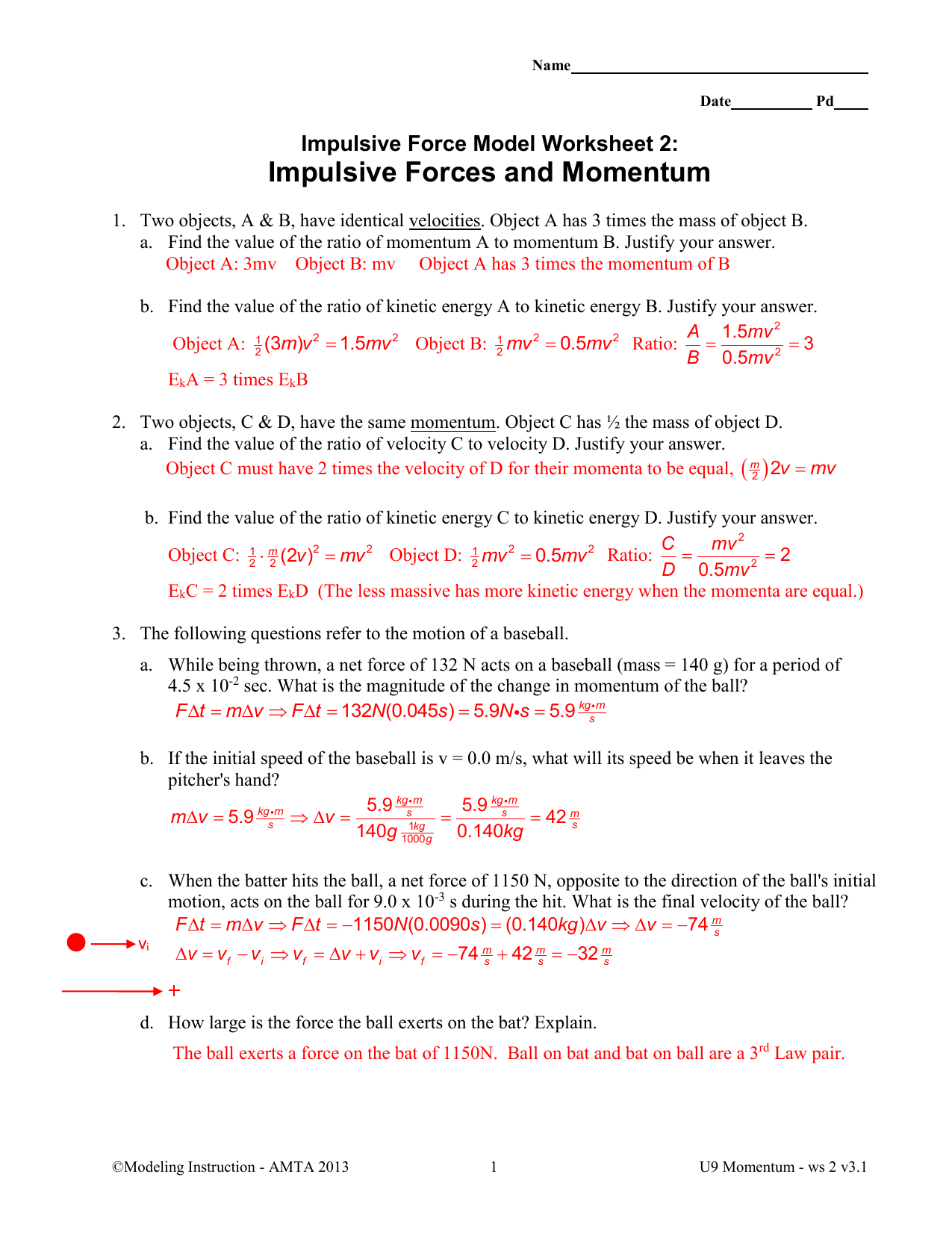

Physics momentum and impulse worksheet answers. So what's the difference between a and -2 times a? well the negative flipped it over, and then the two flipped it over and now it has twice the magnitude but because of the negative it has twice the magnitude in the other direction.Impulse momentum worksheet 1 answers (QSTION.CO) - The momentum of an object can change. But you get a vector that looks like this. I'm purposely not having them all start at the origin, because they don't HAVE to all start at the origin. if you were to start at the origin! remember you don't have to start at the origin. What would this give? And what would be the resulting visualization of the vector? Well let's see, this would be equal to -2 times 2 is -4, -2 times 1 is -2, so this vector. And I encourage you to pause this video and try this on your own. So you could imagine, if you were to take something like -2 times your vector a, -2 times your vector a. So it makes sense that this would flip its direction. In fact when we dealt with the traditional number line, that's what happened If you took 5 times -1, well now you're going in the other direction you're at -5, you're 5 to the left of zero. Which makes sense, that multiplying by a negative number would do that. Its magnitude actually has not changed, but its direction is now in the exact opposite direction. So now -1 times a is going to be (-2,-1) So if we started at the origin, we would move in the horizontal direction -2, and in the vertical -1 So now what happened to the vector? When I did that? Well now it flipped its direction! Multiplying it by this -1, it flipped it's direction. So 2 times -1 is -2, and 1 times -1 is -1. We would multiply each of the components by -1. Well using the convention that we just came up with. Let's just multiply it by -1 for simplicity. Let's multiply our vector a by a negative number. It Increased its magnitude by 3 without changing its direction. The scalar, when you multiply it, it scales up a vector. Or it might make an intuition of where that word scalar came from. One way to think about it is we scaled it up by 3. Its magnitude is now 3 times longer, which makes sense! Because we multiplied it by 3.

did not change the direction that my vector is going in. Multiplying by the scalar, at least the way we defined it. So this right over here has the same direction. So what just happened to this vector? Well notice, one way to think about it is what has changed, and what has not changed about this vector? Well what's not changed is still pointing in the same direction. So it gets us right over there, so it would look like this. We would move 6 in the horizontal direction. So the vector (6,3), if we started at the origin. Now I encourage you to get some graph paper out and to actually plot this vector, and think about how it relates to this vector right over here. And it's going to be the 2-dimensional vector (6,3). And then the resulting vector is still going to be a 2-dimensional vector. And we're going to multiply each of these with 3. But how do we define multiplying 3 times this vector? Well one reasonable thing that might jump out at you is, why don't we just multiply the 3 times each of these components? So this could be equal to. while this is just a plain number right over here.

It's giving you both the magnitude and a direction. One way to think about a scalar quantity, it is just a number, versus a vector is giving you how much you're moving in the various directions.

which is the same thing as saying 3 times (2,1) So 3 is just a number. Now what I want to do is think about, how we can define multiplying this vector by a scalar for example, if I were to say 3 times the vector a. Let's say that I have the vector a, and let's say that it's equal to (2,1) So we could draw it right over here, So it's equal to (2,1), so if we were to start at the origin and we would move 2 in the horizontal direction, and 1 in the vertical direction so we would end up right over here.


 0 kommentar(er)
0 kommentar(er)
